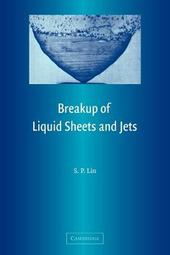
|
Breakup of Liquid Sheets and Jets
Paperback / softback
Main Details
| Title |
Breakup of Liquid Sheets and Jets
|
| Authors and Contributors |
By (author) S. P. Lin
|
| Physical Properties |
| Format:Paperback / softback | | Pages:286 | | Dimensions(mm): Height 228,Width 152 |
|
| Category/Genre | Applied mathematics
Mechanical engineering and materials
Materials science
Aerospace and aviation technology |
|---|
| ISBN/Barcode |
9780521152891
|
| Classifications | Dewey:620.1064 |
|---|
| Audience | | Professional & Vocational | |
|---|
| Illustrations |
Worked examples or Exercises
|
|
Publishing Details |
| Publisher |
Cambridge University Press
|
| Imprint |
Cambridge University Press
|
| Publication Date |
12 August 2010 |
| Publication Country |
United Kingdom
|
Description
This book, first published in 2003, is an exposition of what we knew about the physics underlying the onset of instability in liquid sheets and jets. Wave motion and breakup phenomena subsequent to the onset of instability are carefully explained. Physical concepts are established through rigorous mathematics, accurate numerical analyses and comparison of theory with experiment. Exercises are provided for students, and these help familiarize the reader with the required mathematical tools. This book further provides a rational basis for designing equipment and processes involving the phenomena of sheet and jet breakup. Researchers interested in transition to turbulence, hydrodynamic stability or combustion will find this book a highly useful resource, whether their background lies in engineering, physics, chemistry, biology, medicine or applied mathematics.
ReviewsReview of the hardback: '... valuable source of information on free-surface flows ...'. Journal of Fluid Mechanics Review of the hardback: 'This text is written in a style making it easy to understand, and is presented at a reasonable pace, allowing the readers to first focus on the fundamentals before proceeding on to more complex systems.' The Chemical Engineer Review of the hardback: 'The author presents the most important results obtained by Savart (1833), Plateau (1873), Rayleigh (1879), G. I. Taylor (1959), S. Chandrasekhar (1961) and other authors until 2003, including his own contributions. ... The book is a good guide to specialists and beginners and, at the same time, a landmark to those interested in the development of the problem.' Zentralblatt MATH
|